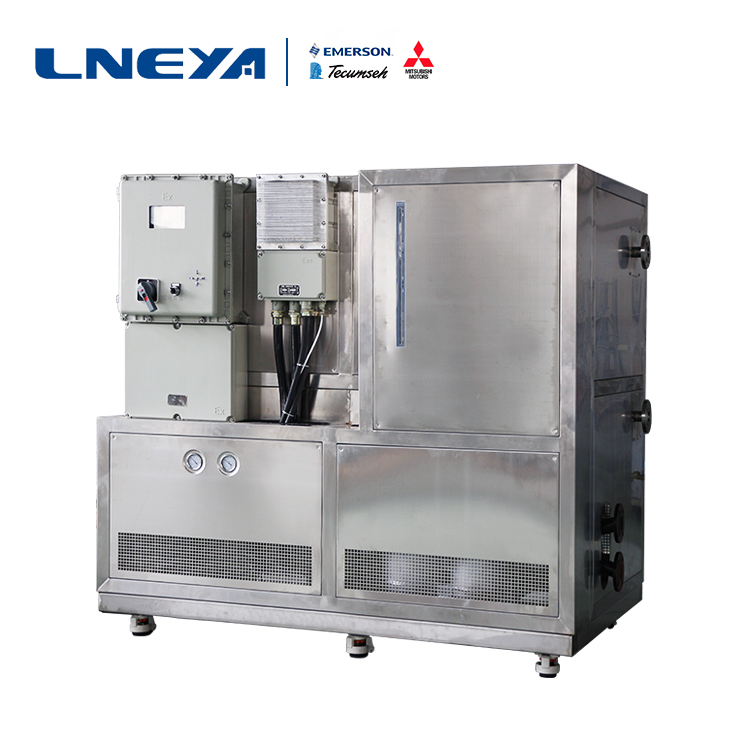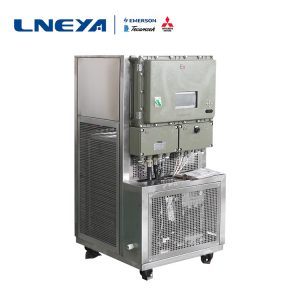Principio del sistema de control de temperatura TCU
Use area: can be used in various explosion-proof areas
The temperature control unit (TCU) is mainly used in reactor heating, cooling temperature control in fine chemical, chemical pharmaceutical, and biopharmaceutical processes. It can realize automatic control of temperature rise, temperature drop, constant temperature and distillation during the reaction process, especially suitable for the reaction process. There is a process control that requires heat and heat.
When the TCU temperature control unit is in high-efficiency operation, it must pay attention to timely protection and maintenance. If the equipment is actively handled under the condition that the equipment is subject to defects, the service life of the equipment will become longer.
Users can get a closed and repeatable temperature control over a wide temperature range, temperature control from -120 to 300 °C; avoid the need for replacement of traditional equipment and jacket maintenance; smaller fluid volume is also guaranteed The control loop reacts quickly and the thermal reaction delay is small. Built-in electric heating and heat conduction and auxiliary system, can be automatically opened according to demand, reducing steam pressure. The device has a standardized interface, which can increase the heat source heat exchange module according to actual needs.
The TCU device opens the angle of the electric regulating valve according to the instruction given by the system PLC, and controls the flow rate of the low temperature liquid into the reaction jacket jacket, thereby achieving energy saving and high efficiency. All signals fed back by this process are based on temperature.

LNEYA’s TCU temperature control system principle:
1. The method of changing the control set value can respond to the system lag in the process as soon as possible, and get a small system overshoot. Control consists of two sets of PIDs (each group of PIDs are variable) control loops;
2. A specially designed lag predictor (no model self-built tree algorithm) generates a dynamic signal yc(t) instead of the process variable y(t) as a feedback signal. Generating an e(t) signal to the controller to cause the controller to predict that the control action has no large hysteresis, so that the controller can always generate a suitable control signal;
3. Through three-point sampling (material temperature point, temperature control system outlet temperature, temperature control system inlet temperature), through our company’s own model-free self-built tree algorithm and general anti-lag cascade algorithm.
Recomendaciones relacionadas
-
Influencia del aceite de congelación en el sistema de ensayo de motores de propulsión de vehículos de nueva energía
1975El peligro del aceite refrigerante en el sistema de prueba del motor de propulsión del vehículo de nueva energía aumenta la temperatura de condensación y la presión de condensación; la transferencia de calor del condensador se deteriora. Debido a que la película de aceite producida por el aceite que entra t...
Ver detalles -
Price Analysis of High Low Temperature Test Chambers
1691As the saying goes, “ You get what you've paid. ” The price of the high low temperature test chamber is related to the quality of its configuration. The technology of Wuxi LNEYA itself is priceless. In the test chamber industry, the high low tempe...
Ver detalles -
High and low temperature hot and cold water cooling machine for battery motor test
1661LNEYA high and low temperature cold and heat integrated water cooler is used in battery thermal management of new energy electric vehicles. The following is the relevant principle applied in thermal management.The high and low temperature cold and...
Ver detalles -
Trouble shooting method for refrigeration device of air-cooled cold water mechanism chemical reactio
1773If air enters into the air-cooled coldwater mechanism refrigeration unit system of the chemical reaction kettle, theimpact will be many. Enter the air circulation system first, the pressure willrise, the heat dissipation effect of the condenser...
Ver detalles
 LNEYA Enfriadoras industriales Fabricante Proveedor
LNEYA Enfriadoras industriales Fabricante Proveedor













